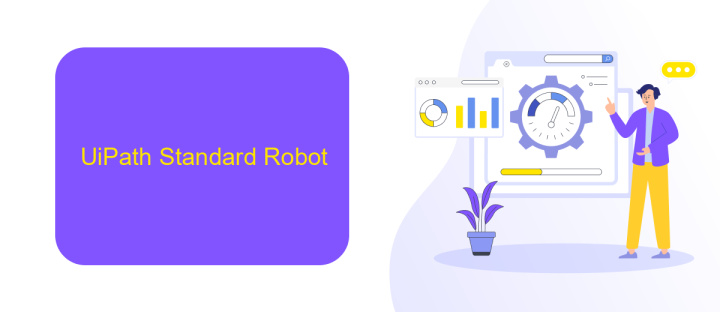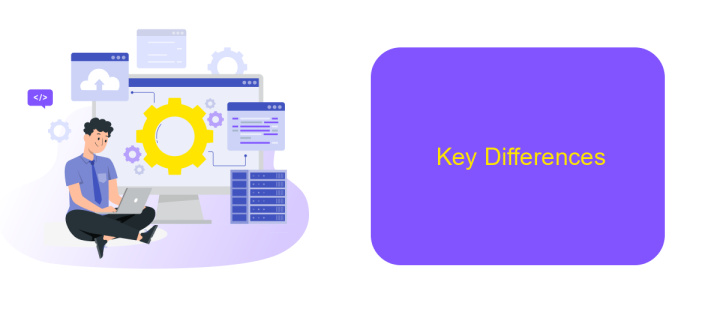UiPath Standard Vs Floating Robot
When it comes to optimizing robotic process automation (RPA) with UiPath, understanding the differences between Standard and Floating Robots is crucial. This article delves into the unique features, advantages, and use cases of each type, helping you make an informed decision on which robot configuration best suits your business needs and enhances your automation strategy.
Overview
UiPath offers two types of robots: Standard and Floating. Standard robots are tied to a specific machine, making them ideal for environments where tasks are consistently performed on the same hardware. Floating robots, on the other hand, are not bound to any particular machine, allowing for greater flexibility and scalability, especially in dynamic or cloud-based environments.
- Standard Robots: Assigned to a specific machine. Ideal for fixed environments.
- Floating Robots: Not tied to any machine. Suitable for dynamic and scalable deployments.
Choosing between Standard and Floating robots depends on your organization's needs. Standard robots are excellent for stable, unchanging setups, while Floating robots offer the flexibility required for dynamic workloads. For seamless integration and automation, services like ApiX-Drive can be utilized to connect UiPath robots with various applications, enhancing workflow efficiency and reducing manual intervention.
UiPath Standard Robot

UiPath Standard Robot is a dedicated automation agent assigned to a specific machine. It is designed for scenarios where a robot needs to be consistently available on a particular workstation, ensuring reliability and performance. Standard Robots are ideal for environments where tasks are repetitive and require a stable setup, such as data entry, report generation, and other back-office operations. They are configured to work only on the machine they are installed on, providing a secure and controlled automation experience.
In terms of integration, UiPath Standard Robots can seamlessly connect with various applications and services to enhance workflow efficiency. For instance, using ApiX-Drive, businesses can automate data transfers between different platforms without manual intervention. ApiX-Drive facilitates smooth integration with numerous applications, allowing UiPath Standard Robots to perform complex tasks by interacting with multiple systems. This capability is especially useful for organizations looking to streamline their operations and reduce the potential for human error in data handling processes.
UiPath Floating Robot

UiPath Floating Robots are designed to provide flexibility and scalability in managing robotic process automation (RPA) across multiple machines. Unlike standard robots, floating robots are not tied to a specific machine. Instead, they can dynamically allocate tasks to any available machine within a defined pool, optimizing resource utilization.
- Scalability: Floating robots allow for easy scaling of RPA operations by utilizing a pool of resources, ensuring that tasks are executed efficiently.
- Flexibility: Since they are not bound to a single machine, floating robots can be deployed across various environments, enhancing operational flexibility.
- Cost-Efficiency: By maximizing the use of available resources, floating robots help reduce costs associated with maintaining idle machines.
Integrating floating robots with external services can further enhance their capabilities. For instance, using ApiX-Drive, a service that facilitates seamless integration between different applications, can streamline the process of connecting UiPath with other tools and platforms. This ensures that the floating robots can interact with a wide range of systems, thereby expanding their utility and effectiveness in automating complex workflows.
Key Differences

When comparing UiPath Standard and Floating Robots, the primary distinction lies in their deployment and management. Standard Robots are tied to a specific machine, making them ideal for stable environments where the machine is always available. Conversely, Floating Robots are not tied to any particular machine, offering flexibility for dynamic environments where machines may change frequently.
Standard Robots require manual allocation to a machine, which can be time-consuming in larger setups. Floating Robots, however, can be automatically assigned to any available machine within a pool, streamlining the management process and reducing downtime.
- Deployment: Standard Robots are machine-specific, while Floating Robots can operate on any machine within a pool.
- Flexibility: Floating Robots offer greater flexibility and adaptability in dynamic environments.
- Management: Floating Robots simplify management and reduce downtime through automatic allocation.
- Scalability: Floating Robots are more scalable in large, distributed systems.
For those looking to integrate various services and automate workflows, tools like ApiX-Drive can enhance the capabilities of both Standard and Floating Robots. ApiX-Drive allows seamless integration with multiple platforms, ensuring smooth data flow and process automation.
Conclusion
When comparing UiPath Standard and Floating Robots, it's essential to consider the specific needs of your organization. Standard Robots are ideal for dedicated tasks and environments, ensuring consistent performance and reliability. On the other hand, Floating Robots offer flexibility and resource optimization, making them suitable for dynamic and scalable operations.
Ultimately, the choice between Standard and Floating Robots will depend on your operational requirements and workflow dynamics. For seamless integration and efficient automation, services like ApiX-Drive can be instrumental. They facilitate easy integration between various platforms, ensuring that your UiPath Robots work harmoniously within your existing ecosystem. By carefully evaluating your needs and leveraging the right tools, you can optimize your automation strategy for maximum efficiency and effectiveness.


FAQ
What is the primary difference between a Standard Robot and a Floating Robot in UiPath?
Can I switch a Standard Robot to a Floating Robot in UiPath?
How do Floating Robots improve scalability in UiPath automation?
What are the use cases for Standard Robots?
Can I integrate UiPath with other automation tools or services?
Apix-Drive is a universal tool that will quickly streamline any workflow, freeing you from routine and possible financial losses. Try ApiX-Drive in action and see how useful it is for you personally. In the meantime, when you are setting up connections between systems, think about where you are investing your free time, because now you will have much more of it.

